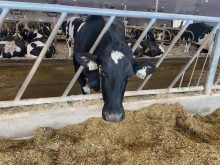The Manitoba Pork Council (MPC) is hoping members will help it generate better data on how farms are currently using antimicrobials, as well as how that use might be improved.
The council says it would like to double the number of farms involved in its benchmark antimicrobial monitoring study. The project was launched in 2020, with the intention that pork producers would be able to compare their usage with other farmers.
About 50 farms registered with the program in its first year, with data being analyzed from 2019.
Read Also

Sharing stories to promote Canadian farm safety
Personal stories can sometimes go farther than facts and data to promote safe practices on Canadian farms, Canadian Agricultural Safety Association conference attendees hear.
Why it matters: The Manitoba Pork Council hopes data collected through the program will lower farm cost, improve antibiotic usage practices and signal the industry’s stewardship commitment.
The project is now gearing up to collect and analyze 2020 data, and MPC general manager Cam Dahl says they hope to boost participant numbers closer to 100.
Dahl says the program starts with producers reaching out to their herd veterinarians, who will then co-operate with the farmer to collect and report data from last year. The program will cover the cost of the veterinarian’s time, up to $400, according to MPC.
“It’s to help increase some of the awareness of some of the use of antibiotics and to really have that in-depth conversation, again, with their vets, about what that optimal use is,” Dahl said. “And then what we’re looking to do is to collect and analyze the data on these farms on what antibiotics are being used, what they’re being prescribed for.”
The study hopes to add a more detailed breakdown to the general usage information already available, he noted.
Strategic move
The initiative dovetails with MPC’s 2022-27 strategic plan. The council hopes to see significant improvements over the next five years on data management, both utilizing data already available and addressing gaps where few numbers are known. Data, such as that produced by the antimicrobial use study, will help the council’s efforts to promote the industry, as well as maximizing farm operations, MPC has said.
“I think every association is saying that today, that data management is critically important, but it really is,” Dahl said. “It helps us with looking at ways of reducing cost and increasing efficiency, but it also helps with responding to public trust concerns as well as helping with research.”
The study is yet one more example of projects emerging from increased scrutiny on antimicrobial use in the livestock sector, a conversation with impacts spanning both public trust and industry regulation. It is not so long ago, for example, that national rules changed to restrict the over-the-counter sale of common livestock antibiotics, or that action plans to reduce usage were leased at both national and international levels, or that end-users started marketing antibiotic-free meat.
Canada as a nation, meanwhile, has some work to do, according to MPC chair Rick Préjet. Antimicrobial use in Canada does not always stack up well in comparison to other nations, when measured in the internationally standard population control units that take animal weight and national herd size into account, he noted during a producers’ meeting in late October.
According to a 2018 report from the Canadian Integrated Program for Antimicrobial Resistance Surveillance (CIPARS), Canada averaged 149 milligrams of antimicrobials sold per population control unit (mg/PCU) that year, compared to the median average of 62 mg/PCU in European Union countries the year before. That Canadian number used European weights in the calculation. Using Canadian weights, the same report noted Canadian usage at 133 mg/PCU.
“There’s work to be done there,” Préjet said. “A lot of countries have reduced their usage and are doing quite well and, you know, not seeing major health issues, so (it’s) something we need to keep on working on.”
Farmers interested in the MPC program can email the producer group at [email protected].
















